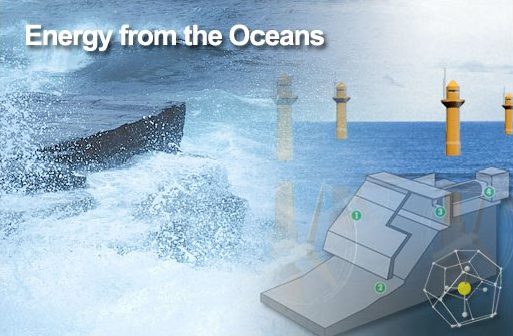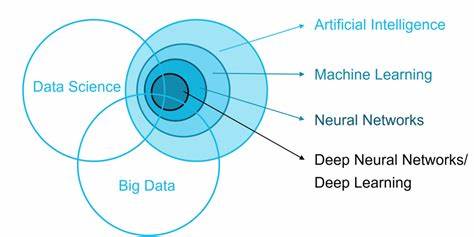
Introduction
The field of ocean energy has witnessed significant advancements in recent years, with artificial intelligence (AI) and machine learning (ML) emerging as crucial tools in optimizing the efficiency and sustainability of this renewable energy source. This article provides an overview of the role of AI and ML in ocean energy, highlighting their relevance and importance. Additionally, it explores interesting aspects and potential benefits associated with the integration of these technologies in the field.
Historical Background
The evolution of AI and ML in ocean energy can be traced back to the early stages of research and development in the field. Over the years, milestones and advancements have contributed to the growth of AI and ML applications. These technologies have revolutionized the way ocean energy systems are designed, operated, and maintained.
Key Concepts and Definitions
AI is a branch of computer science that focuses on creating intelligent machines capable of performing tasks that would typically require human intelligence. In the context of ocean energy, AI is used to optimize energy extraction, monitor and maintain systems, and enhance overall performance. On the other hand, ML refers to the ability of computer systems to learn and improve from experience without being explicitly programmed. ML techniques are employed in ocean energy to collect and analyze data, predict and forecast energy patterns, and develop autonomous systems.

Main Discussion Points
Integration of AI and ML in ocean energy systems plays a crucial role in optimizing energy extraction. By analyzing real-time data, these technologies enable the identification of optimal conditions for energy generation. Additionally, AI and ML are used for monitoring and maintenance, ensuring the smooth operation of ocean energy systems. While the implementation of AI and ML offers numerous benefits, such as increased efficiency and reduced costs, potential drawbacks, such as technical challenges and job displacement, must be considered.
Data Collection and Analysis for Ocean Energy
AI and ML are instrumental in collecting and analyzing data in ocean energy projects. Through the utilization of intelligent sensors and data collection techniques, these technologies provide valuable insights into the performance of ocean energy systems. The collected data is then analyzed using AI and ML algorithms to identify patterns and optimize energy generation. This approach significantly improves the efficiency and performance of ocean energy systems.
Prediction and Forecasting in Ocean Energy
AI and ML techniques are employed for predictive modeling and forecasting in ocean energy. By analyzing historical data and incorporating real-time data, these technologies enable accurate predictions of wave and tidal patterns, aiding in the optimization of energy generation. Examples of AI and ML techniques used include neural networks and genetic algorithms. Accurate predictions have significant implications for optimizing energy generation and reducing downtime.
Autonomous Systems and Robotics in Ocean Energy
The integration of AI and ML has led to the development of autonomous systems for ocean energy. These systems utilize AI algorithms to make real-time decisions, enhancing the efficiency and safety of operations. Additionally, robotics and AI play a crucial role in the maintenance and repair of ocean energy infrastructure. While the use of autonomous systems offers benefits such as increased productivity and reduced risk to human operators, challenges such as regulatory frameworks and potential environmental impacts need to be addressed.

Case Studies or Examples
Case study: Application of AI and ML in optimizing wave energy conversion
In this case study, AI and ML techniques are utilized to optimize the conversion of wave energy into electricity. By analyzing wave characteristics and system performance, AI algorithms enable the identification of optimal operating conditions, maximizing energy extraction.
Case study: Use of AI and ML for predictive maintenance in tidal energy farms
This case study focuses on the application of AI and ML in the predictive maintenance of tidal energy farms. By analyzing sensor data and historical maintenance records, AI algorithms can identify potential equipment failures, enabling proactive maintenance and minimizing downtime.
Case study: Autonomous underwater robots for monitoring and inspection of ocean energy systems
In this case study, autonomous underwater robots equipped with AI and ML capabilities are used for the monitoring and inspection of ocean energy systems. These robots collect data on system performance and integrity, enabling timely maintenance and reducing the need for human intervention.
Current Trends or Developments
Recent advancements in AI and ML have led to improved algorithms and techniques for optimizing energy extraction, predictive modeling, and autonomous operations in ocean energy systems. These advancements have resulted in increased efficiency and sustainability in the field.
Innovations and research findings in data analysis and predictive modeling
Ongoing research in data analysis and predictive modeling has led to the development of advanced algorithms and methodologies. These innovations enhance the accuracy and reliability of predictions, aiding in the optimization of energy generation and system performance.
Integration of AI and ML with other emerging technologies in ocean energy
The integration of AI and ML with other emerging technologies, such as Internet of Things (IoT) and big data analytics, has further enhanced the capabilities of ocean energy systems. This integration enables real-time monitoring, data-driven decision-making, and improved system performance.
Challenges or Controversies
The implementation of AI and ML in ocean energy raises ethical considerations, such as privacy concerns and bias in decision-making algorithms. It is crucial to address these ethical considerations to ensure the responsible and ethical use of AI and ML technologies.

Potential risks and environmental impacts associated with AI and ML implementation
The implementation of AI and ML in ocean energy systems may pose risks such as cyber threats and potential environmental impacts. These risks need to be carefully evaluated and mitigated to ensure the sustainability and safety of ocean energy operations.
Differing viewpoints on the effectiveness and feasibility of AI and ML in ocean energy
There are differing viewpoints on the effectiveness and feasibility of AI and ML in ocean energy. Some argue that these technologies have the potential to revolutionize the field, while others express concerns about technical challenges and limitations.
Future Outlook
Potential advancements and emerging technologies in AI and ML for ocean energy
The future holds potential advancements in AI and ML for ocean energy, including improved algorithms, enhanced data collection techniques, and advanced predictive modeling capabilities. These advancements will contribute to further optimization of energy extraction and system performance.
Anticipated impact of AI and ML on the efficiency and sustainability of ocean energy
The anticipated impact of AI and ML on the efficiency and sustainability of ocean energy is significant. These technologies enable real-time optimization, predictive maintenance, and improved decision-making, leading to increased energy generation and reduced environmental impact.
Future challenges and opportunities for AI and ML in the field
The future presents both challenges and opportunities for AI and ML in ocean energy. Challenges include addressing technical limitations and mitigating potential risks, while opportunities lie in further research and development, innovation, and collaboration among stakeholders.
Conclusion
In conclusion, the integration of AI and ML in ocean energy systems offers immense potential for optimizing efficiency and sustainability. By utilizing these technologies for energy extraction, data analysis, prediction, and the development of autonomous systems, the field of ocean energy can enhance its performance and contribute to a greener future. Continued research and development in this area are crucial to unlock the full potential of AI and ML in ocean energy.




